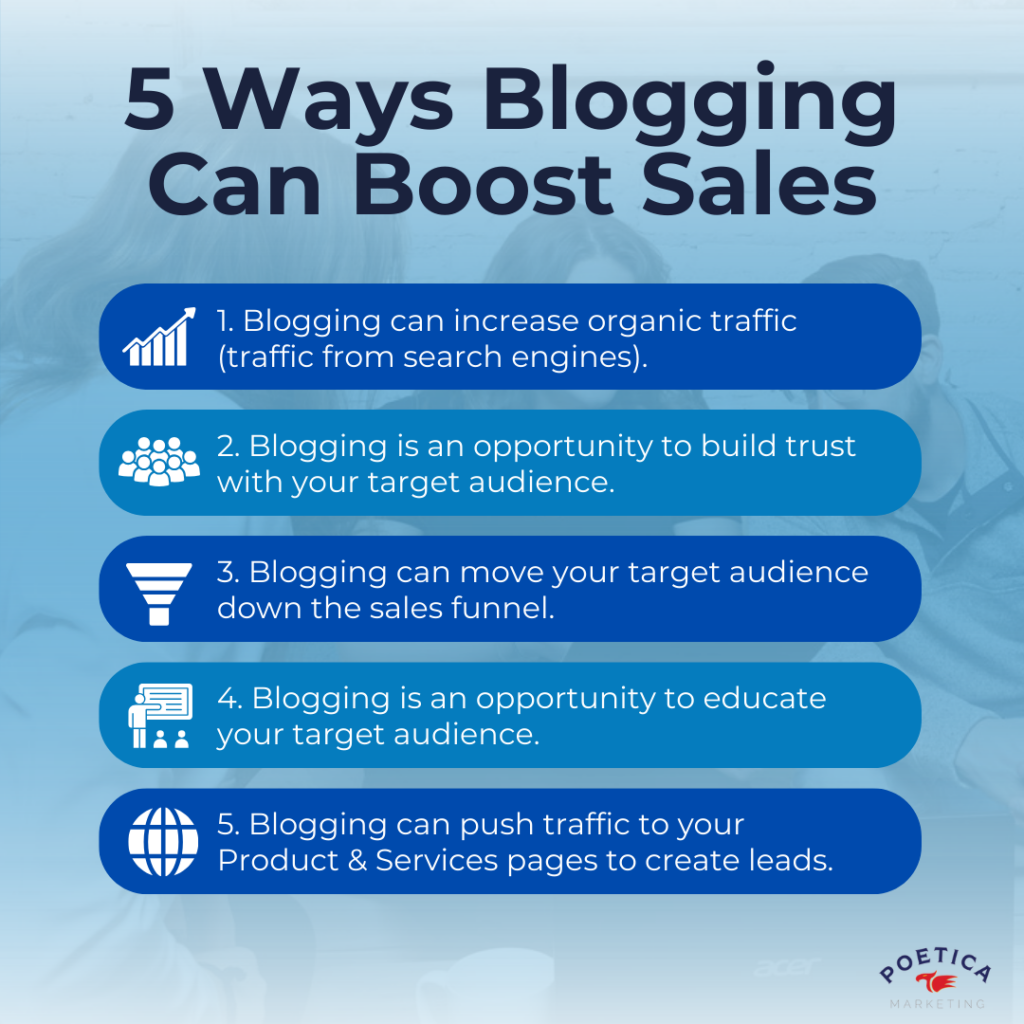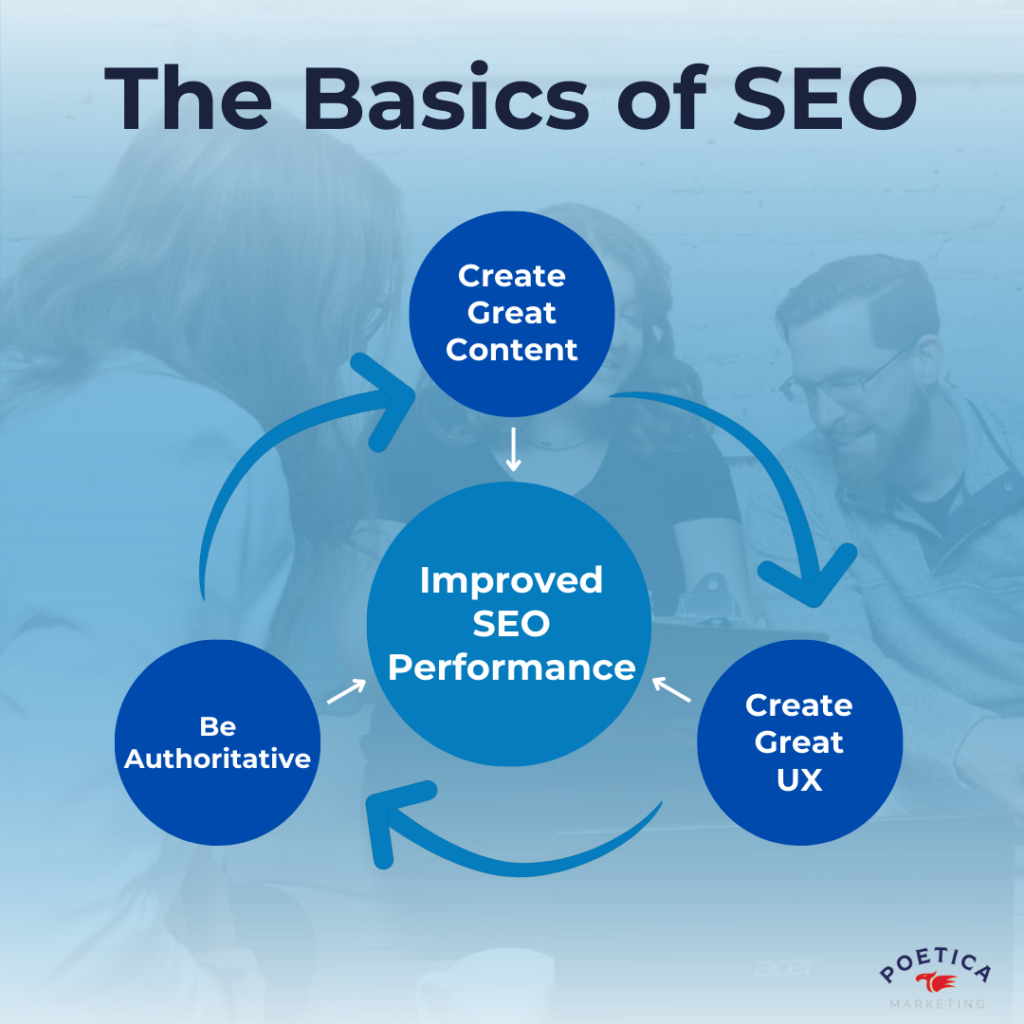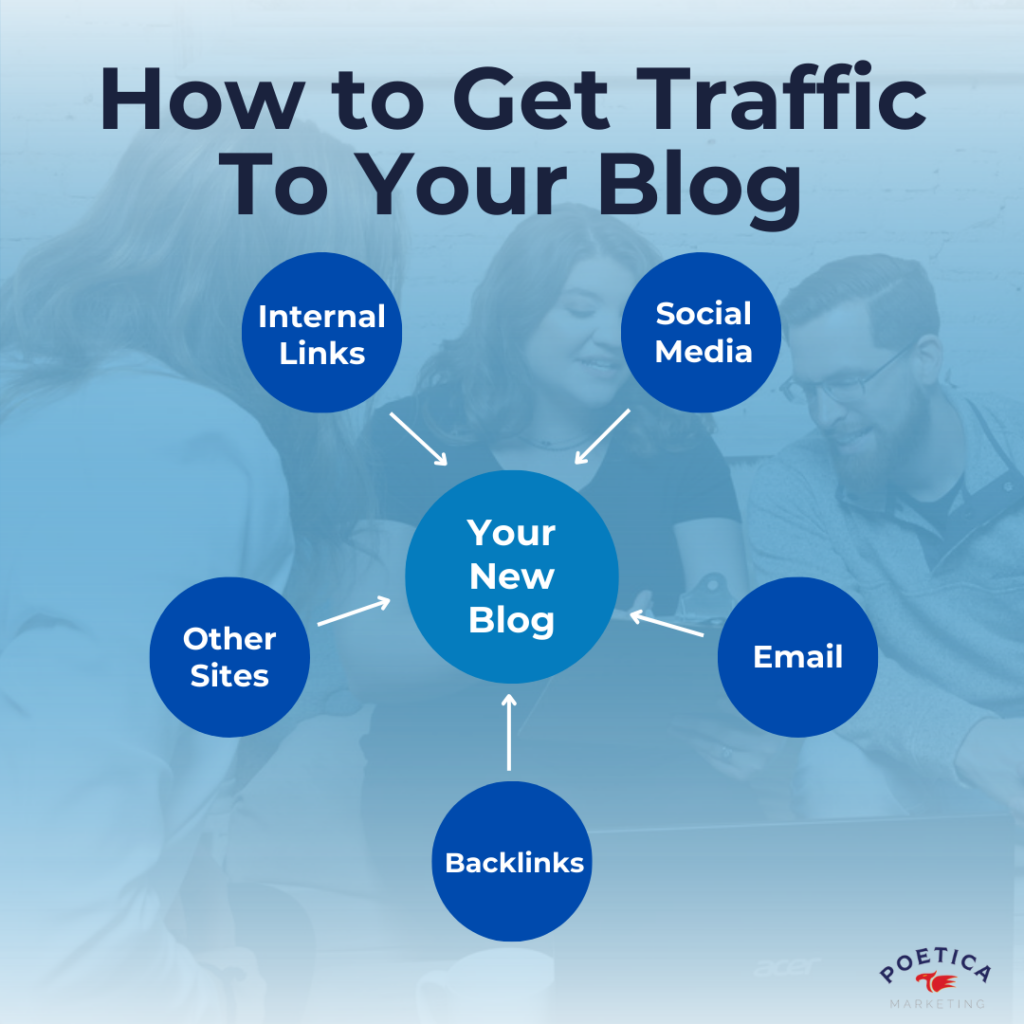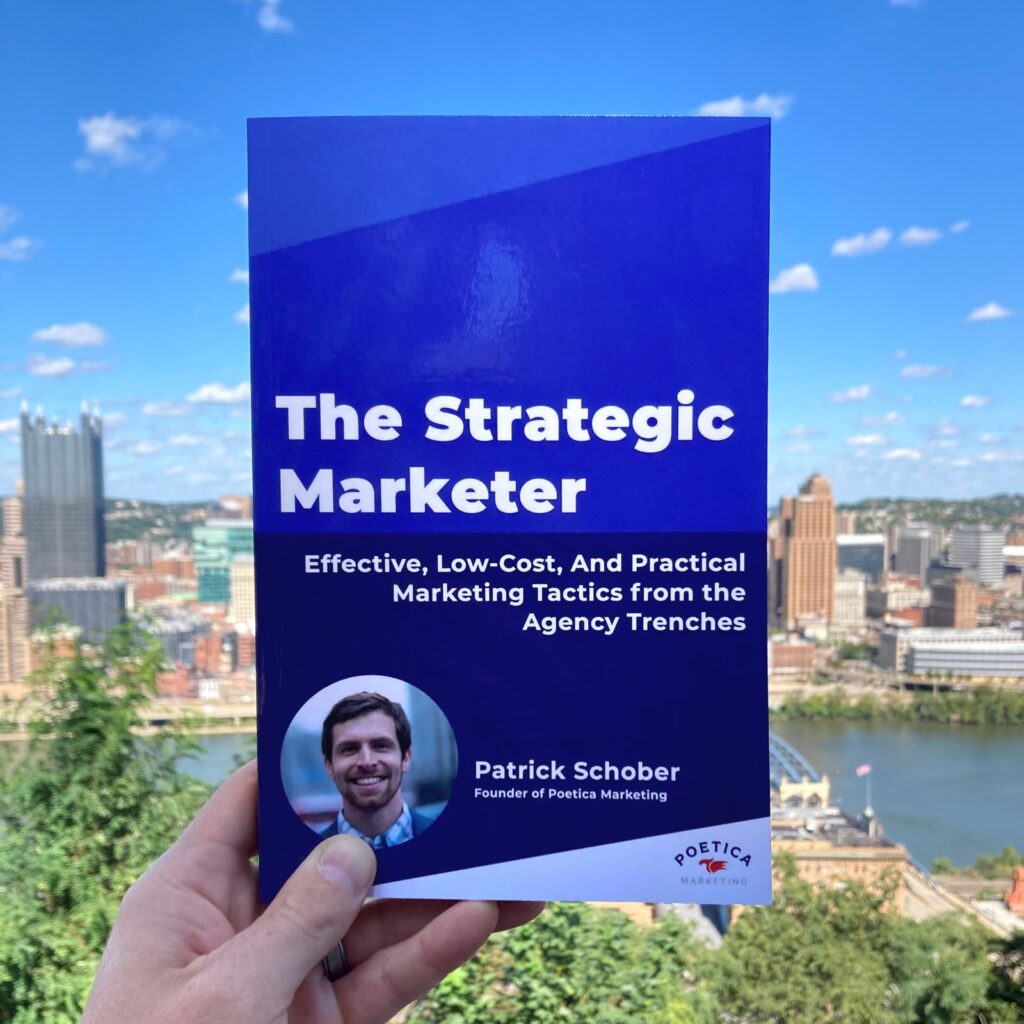How to Increase Sales With Blogging: Make This Your Most Profitable Year Ever
When people hear that we’re a content marketing agency, one of the first questions they ask is: Can you really increase sales with blogging?
The answer, of course, is Yes.
But there’s a lot of strategy to it, and it rarely happens by accident. In a competitive internet landscape, many of your competitors are already using their own blogs to generate site traffic and increase their sales.
So, how can you use blogging to drive sales?
With a greater understanding of how blogs work, a few principles of SEO, and a little bit of data tracking, you can turn your blog into one of your best sales engines!
Jump to the section that’s most useful for you to learn more:
Table of Contents
How To Increase Sales With Blogging: Summary
5 Ways Blogging Can Boost Sales
Understanding the Sales Funnel
Blogging And the Sales Funnel
SEO & Blogging
The Power of the CTA
Getting Traffic to Your Blog Post
Using Data to Track Your Blog’s Sales Performance
Blogging For Sales: Case Studies
Find Help Increasing Sales With Blogging
How to Increase Sales With Blogging: Summary
We’ve gone into great detail about how to use blogging to boost sales in this article, so here’s a quick summary of what to know:
1. Understand How Blogging Can Boost Sales
Blogging can drive traffic to your website while nurturing your target audience into leads and prospects. Plus, blogging can pull people into your sales funnel!
2. Understand the Sales Funnel
The buyer’s journey and sales funnel are closely linked. The better you understand them, the better you can create blogging content!
3. Understand Blogging And the Sales Funnel
By creating content specifically for each stage of the buyer’s journey and sales funnel, you can systematically move people through your sales pipeline until they convert.
4. Understand SEO & Blogging
Blogging is a powerful SEO force, and it can drive organic traffic to your website to capture new leads.
5. Understand the Power of the CTA
You can increase your conversions by focusing on your CTAs—your calls to action. By perfecting your calls to action, you can guide users through your sales funnel.
6. Understand How to Get Traffic to Your Blog Post
SEO isn’t the only way to get traffic to your blog post! By focusing on links, social media, email, and more, you can drive valuable traffic to your blogs.
7. Understand How to Use Data to Track Performance
You can’t improve what you don’t measure! Measuring your blogs on a regular basis can help you make gradual, systematic performance improvements that increase leads and sales.
5 Ways Blogging Can Boost Sales
Before we talk about strategies to increase sales with blogging, let’s review some of the reasons why blogging can be so impactful to your sales efforts:

1. Blogging Can Increase Organic Traffic
Blogging increases your chances of ranking higher in Google searches by 434%, according to OptinMonster, and blogs with 50 or more posts get 77% more traffic than their competitors, according to Content At Scale.
2. Blogging Is An Opportunity to Build Trust
Blogging is your chance to demonstrate your subject matter expertise and pull readers into your ecosystem.
3. Blogging Can Move People Down the Sales Funnel
Blogging is critical for both B2C shoppers and B2B shoppers, but it’s especially important in the B2B world: A whopping 71% of B2B buyers say they rely on consuming blog content during their buyer’s journey, according to OptinMonster!
4. Blogging Is An Opportunity to Educate Your Target Audience
When you’re pulling people into your website during the buyer’s journey, you have the perfect opportunity to teach readers about your services and products and what differentiates you from the competition!
5. Blogging Can Push to Your Products & Service Pages And Can Generate Leads
Your blogs are great tools for pushing people to high-value locations on your website, including:
- Your Product Pages
- Your Service Pages
- Your Gated Content & Lead Gen Forms (You can even embed these forms directly into your blogs—which we did down below!)
Understanding the Sales Funnel
To understand the value of blogging from a sales perspective, we must first understand the “Sales Funnel,” a diagram that breaks down how a consumer makes a purchasing decision.
We’ve seen some sales funnels as small as three sections, and we’ve also seen them as long as eight steps. But the majority of sales funnels cover these four stages in some way:

1. The Awareness Stage
In the Awareness Stage, a consumer acknowledges a problem they need to solve. They may also become aware of your brand.
Example: You run a used car dealership and work hard to earn the business of new drivers. To do so, you invest in ads and marketing to make new drivers aware that your dealership exists and caters to their needs.
2. The Interest Stage
In the Interest Stage, a consumer goes from acknowledging their problem to thinking about a solution. They may become interested in working with your brand.
Example: Continuing our example: New drivers who are in the market for a vehicle will explore their new and used car options. Ideally, you’re marketing efforts will make them interested in examining your inventory.
3. The Decision Stage
In the Decision Stage, a consumer begins to weigh their options for potential solutions. Ideally, they’ll decide to work with you.
Example: Continuing our example once again: These new drivers know what sort of car they’re interested in, and now they need to decide if they want to purchase from you or the competing dealership down the road from you.
4. The Action Stage
In the Action Stage, a consumer finally completes the transaction and purchases from you. At this point, they’ll take action by paying you or signing a contract.
Example: After seeing your marketing collateral and talking to one of your salespeople, the new drivers decide to work with you. They pay you for the car, and you once again have another happy customer!
Blogging And the Sales Funnel
When working out your content strategy, you should identify where your blogs fit into the sales funnel and where you want to meet consumers on their “Buyer’s Journey”—their own personal experience through the Sales Funnel.
Here’s how you can think about approaching content at each level:

Blogs For the Awareness Stage
Questions to consider when creating content for the Awareness Stage include:
- What problems are your target audience members facing?
- What questions does your target audience frequently ask?
This is also a good time to start thinking about keyword research—the practice of understanding what people are searching for and when they’re looking for it. (We’ll talk about keyword research a little later—skip ahead if you need to!)
Blogs For the Interest Stage
Questions to consider when creating content for the Interest Stage include:
- What are potential solutions to the problems your target audience faces?
- What are the differences between those potential solutions?
Blogs For the Decision Stage
Questions to consider when creating content for the Decision Stage include:
- What makes your solutions different from the competition’s solutions?
- How are your solutions different from each other?
Blogs For the Action Stage
Questions to consider when creating content for the Action Stage include:
- What makes your company unique?
- What makes your solutions unique?
Using the Sales Funnel Stages to Your Advantage
You can also use the sales funnel as a guide in scheduling and structuring your content.
Let’s go back to our used car dealership example from before. If you write a blog about The Best Used SUVs On the Market, it might also make sense to move one step further down the sales funnel and link to another article about The Best Used Honda SUVs on the Market.
And you could then take that a step further and link it to an article about How to Pick Between A Used Honda CR-V and a Used Honda Pilot.
Every article gets a little more specific, and it gradually pushes the reader closer and closer to a purchasing decision.
SEO & Blogging
One of the most powerful forces in blogging for sales is SEO: Search Engine Optimization.
Search Engine Optimization is the practice of building, designing, and writing websites so they rank well on search engines. (To learn more, check out our SEO services.)
Getting back to an earlier example: Say you run a used car dealership. Wouldn’t it be great to rank at the top of Google every time someone in your city searches for “used car dealership near me?”
SEO makes that possible.
And, even more importantly, SEO is one of the best ways of driving traffic to your website.
A Crash Course In SEO Best Practices
We start each of our SEO guides (part of our SEO Coaching) with the same starting point, where we explain the basics of SEO in 114 words:
SEO is a business. Google is worth $1+ trillion in part because of the ads it shows on the search engine results page (SERP).
The only way it gets to show these ads is by acquiring and retaining users.
It acquires users by being synonymous with search.
But it retains them by being the best search engine in the world.
Being the best search engine requires finding the best results for each query.
And finding the best result requires ranking pages based on their content and user experience (UX).
When in doubt, always compete to deliver the best content and UX possible.
That helps your readers. And it helps Google retain users—and make money.
Of course, there’s a little more nuance to it than that, so let’s unpack it a little more:

1. Creating the Best Content – Google is looking for the best answer for each individual search query with every SERP it produces. There are plenty of variables it weighs in doing so, but one of the biggest questions it asks is, How good is this piece of content? In general, the best piece of content reaches the top.
So, how do we define “best?” We recommend checking out the top three or five posts for your given keyword. (We even did it before writing this blog!)
Take note of:
- Article Length
- Imagery
- Infographics
- Videos
- Audio Clips
- Any other media used
Your goal is to create something even better.
As a rule of thumb, though, aim to create media-rich content. With many of our clients at Poetica Marketing, we aim to include at least one video or two infographics in each piece of content we publish.
We should also spend a moment here discussing keyword research. Keyword research is the art of finding what people are searching for on Google and other search engines.
Keyword research can inform you on what keywords or keyphrases to use in your writing. And, just as importantly, it can inform you what keywords and keyphrases not to use in your writing!
Some great tools for keyword research:
2. Creating A Great User Experience (UX) – UX covers a ton of ground—and it gets really technical—but it covers things like:
- using alt text for your images
- ensuring quick load speeds
- simplifying navigation
- linking to other related and relevant content on your website
The better your UX, the better your SEO!
If you want to learn more, contact us or talk to your web developer for additional ideas and perspectives!
3. Being Authoritative – “Authoritative” is a strange word the first time you hear it in the context of SEO, but it makes a lot of sense.
Essentially, Google wants to know that the people writing the content know what they’re talking about.
It’ll measure that by considering factors such as:
- Is the subject matter within your company’s area of expertise?
- Who is the author of this piece of content? What is the author’s credentials?
- How many backlinks point to this individual piece of content?
- How many backlinks point to your website in general?
Those last two are the most complicated, and we’ll touch on them in more detail soon. (Click here if you’d like to jump ahead.) In the meantime, just know that a backlink is a link somewhere on the internet that points back to a page on your website.
The Power of the CTA
One of the most powerful forces in generating sales conversions from your blog posts is the Call to Action (CTA). This is when you prompt the reader to take some sort of beneficial step in their buyer’s journey, such as:
- Contacting your sales team
- Visiting a product/service page
- Clicking to your company’s About Us page
- Downloading a white paper, guide, or another digital asset
And you don’t need to limit yourself to one CTA per post. Tradition dictates that you should include one at the end of your article (like we’ve done here), but you can also sprinkle them throughout your blog to seize on multiple relevant opportunities (like we’ve also done here)!
Getting Traffic to Your Blog Post
Once you’ve written and published your blog, it’s time to move to the next phase of the blog process: promotion.
Here are some of the best strategies to consider:

1. Internal Links
One of the quickest steps you can take to drive traffic to your new sales-driven blog post is to look for logical, high-impact places on your own website to promote it.
You can look at related blog posts, high-traffic pages, and anywhere else it makes sense to link to your post.
Pro Tip: Pay close attention to your anchor link (the text where you embed the link to your new blog). Ideally, you should use the primary target keyword/keyphrase as your anchor to reinforce to Google and other search engines what your post is about.
2. Social Media
Your social media channels are another convenient place to drive traffic to your new blog posts, especially on sites like Facebook and LinkedIn which make it easy to click on links.
And don’t forget to add it to different social media communities as well. Sharing into relevant Facebook Groups and LinkedIn Groups can earn you even more blog traffic.
3. Email
Email campaigns are a great place to promote your new content, especially when your subscribers have willingly opted in to receive emails from you.
You can include blog posts in:
- Your email campaigns to new subscribers. You can even add links to your new blogs in your automated drip campaigns to assist in converting new leads into paying customers.
- Your routine email blasts to promote your new content.
4. Backlinks
As we mentioned earlier, backlinks are a powerful force in raising your website’s authority and simultaneously pushing traffic to your site.
Some simple ways of doing this is by asking your industry partners to link to your new blog—or looking for link opportunities on other websites your company owns.
A trickier—but incredibly valuable—strategy is by getting other websites to link to your content.
In SEO, we have something called The Skyscraper Technique. The Skyscraper Technique is when you intentionally and systematically create a highly valuable piece of content designed to replace the current No. 1 article on the SERP.
After it’s published, you reach out to all of the websites that are currently linking to that No. 1 article and ask them to link to your new and heavily detailed content instead.
Note: This is an incredibly time-intensive process. Although tools like Semrush can make it easier, it’s still a long process. Be prepared to put in some extra work to pull this off!
5. Reddit, Quora, Wikipedia, And Industry Forums
Some of the biggest websites in the world make it relatively easy for you to drop backlinks and start new conversations about your new content. Here’s a small discussion on how to use each of the following websites to your advantage:
- Reddit – You can use your content as a starting point for conversations on individual subreddits related to your blog topic. Note: Pay close attention to the subreddit rules! Some are very strict about anything that could be considered “self-promotion.”
- Quora – This is a popular destination for people asking questions, and your blog post could provide a valuable answer.
- Wikipedia – Wikipedia is one of the most-visited websites in the world. If your blog post contains any original or hard-to-find research, consider adding it as a detail in a related Wikipedia article and citing your blog post.
- Industry Forums – Industry forums are a great place to share your content since the forum already contains the right audience for your blog!
Using Data to Track Your Blog’s Sales Performance
This entire blog would be useless if we didn’t talk about how to track the sales performance of your content.
This can get really tricky if you’re in a services-based business, but here are two tools to help you get started:
1. Search Console
Search Console is a free tool from Google to help you understand how your website, web pages, and blog posts are performing on Google.
It’ll help you track things like:
- Which queries you show up for
- Which pages show up for certain queries
- How well your website ranks
- Which pages are getting clicked on
- How often your website shows up in the SERP
- And much, much more
Check out Google’s Getting Started With Search Console article to learn more.
2. GA4
GA4 (Google Analytics 4) is another free tool for tracking your website performance. Unlike Search Console, GA4 is designed to help you track user behavior on your website.
That means you can track things like:
- Which landing pages people use to access your site
- How people are reaching your website
- Which pages people navigate to
- How people interact with each page
- How long people spend on each page
- How each page leads to sales (if you are an eCommerce company)
Like Search Console, GA4 has a steep learning curve, but it’s incredibly powerful once you understand it!
Check out Google’s [GA4] Introducing the next generation of Analytics, Google Analytics 4 article to learn more.
Blogging For Sales: Case Studies
To learn more about the power of blogging for sales, check out chapter 5 of The Strategic Marketer, a book I wrote to help business owners understand how to tie together disparate parts of the digital marketing strategy.

Or check out these case studies for examples of how best to approach blogging from a sales perspective:
Case Study 1: A Wedding Musician Maxes Out His Calendar
We started working with a wedding musician on his website’s SEO performance back in February of 2020. In March, we put together a blog strategy that aligned with his target audience’s buyer’s journey and focused on content that gradually moved further down the sales funnel.
At the time, he was receiving about 500-750 site visits per month.
That April, we started publishing two original blogs per month.
By October, he was generating close to 8,000 site visits per month, and his calendar was booked up!
Case Study 2: A Music Blog Leads to Additional Sales for Us
We write about Monster Riff quite a bit. It started as a Poetica Marketing side project that has since blossomed into its own community of writers, musicians, and fans.
We created a white paper on Monster Riff to help bands figure out their marketing strategy, and we’ve used a few different techniques to promote it.
Of course, it has its own landing page, but we’ve also installed a banner at the top of the site to drive people to it.
In addition, we occasionally embed it inside of relevant articles, like we did with How to Release Your Stoner Rock Album Without A Record Lable Behind You.
But one of the best strategies for promoting this piece of content (and the rest of our blogs) is through social media.
Our promotion techniques have helped us reach 10,000 site visits per month (not bad for a small website!) and we regularly receive dozens of leads each year simply by pulling in blog traffic that supports our white paper—which, we should mention, is attached to an automated drip email campaign.
Thanks to our blog presence in the underground rock and metal scene, we’re able to generate at least 10 new band projects every year, which creates a nice little boost for our work at Poetica Marketing.
Find Help Increasing Sales With Blogging
If you’re looking for additional help to increase your sales with blogging, contact us! We’d love to provide a free consultation or discuss potential strategies that could be useful for you.

Patrick Schober
Poetica Marketing Founder
I started Poetica Marketing in 2018, and I’ve since helped companies and professionals all over the world enhance their online presence while increasing sales!
A writer at heart and a strategist by trade, I’m passionate about creating compelling written and visual content for SEO performance and social media.
When I’m not in the office, you’ll find me writing the latest article for Monster Riff, catching another rock concert, or diving deep into a book.
